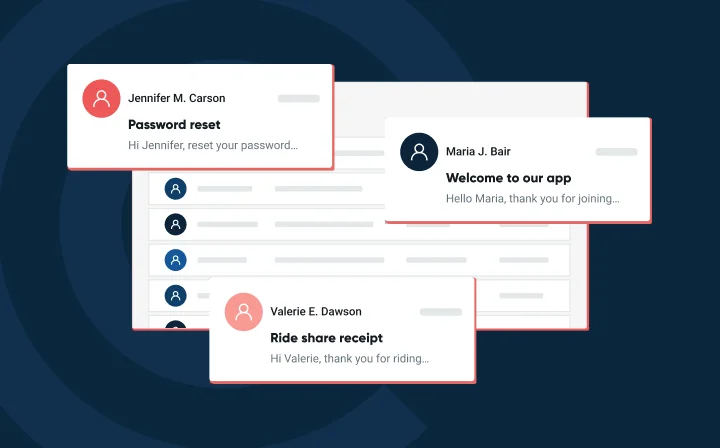The magic behind successful email open rates


So you’ve integrated email into your platform or app. But how can you know whether your users are reading your messages?
After all, sending an email is one thing, but ensuring your recipients open the email is another. Your email open rate is based on a particular subscriber list and is one of the key metrics for success. If you’re sending emails but nobody’s opening them, chances are there’s something in your email strategy that’s interfering with your email open rate.
Let’s dive into how you can understand your email performance, what a good email open rate is, and the factors that affect your open rate. Then we’ll look at some ways you can fix a low open rate to help you perfect your email campaign.
We’ll start with something more general first: How can we understand the performance of your email strategy in general? We mentioned the open rate above, but actually, there are various factors:
The email benchmarks for these rates vary by industry and type of email.
Email open rates are a vital email marketing metric because they tell you how your email campaign is actually performing. For instance, open rates will tell you:
Now that we have an idea of why email open rates are important, let’s look at what makes a good email open rate.
Open rates depend on the type of email you’re sending. For instance, most transactional emails have an average open rate of 80-85%, while most marketing emails are between 20-25%.
Transactional emails tend to have a higher open rate because it’s the kind of information people tend to view immediately or repeatedly revisit, like password resets or receipts for purchases. It’s not uncommon to see a high open rate there.
Email marketing is trickier, which is why at Mailgun we always recommend to keep transactional and marketing emails separate. That way, senders can prevent the lower engagement rates in email marketing from impacting your triggered messages.An email rate of 20-25% isn’t bad, but let’s look at some qualities for good email open rates:
Now that we know what a good email open rate looks like, let’s dive into a few factors that affect it:
Accessibility: Is your subscriber not only able to receive your email but also able to properly read it? When designing your content marketing and subject lines, keep screen readers in mind to improve accessibility and increase open rates.
All of these will help you achieve a healthy open rate.
Unfortunately, it’s hard to pinpoint what goes wrong if you’re unfamiliar with these best practices. If you’re still struggling with a low open rate, we always recommend starting by conducting a detailed email deliverability audit. This audit will help you determine what’s working and what isn’t, and will allow you to identify issues and potential threads.
Lower open rates are often caused by low quality email lists. If you’ve had your email list for a while or built it through shady means, the subscribers on your data base might just not be interested in what you have to send.
Instead, clean out users who haven’t engaged with your messages depending on how often you send emails. For example, if you send a newsletter out once a month and a user hasn’t opened the past three, it’s time to let them go. In an ideal world, they’d unsubscribe and clean your list for you, but people may forget or stop using that email address entirely.
Think about the content you’re putting out there. Is it relevant for your audience? Are you using personalization tokens in your subject lines and in the body of your email?
Little changes like these can make a big difference in getting someone to open an email. Even something as simple as “Hey Natalie, we think you might like our new product update” does leagues better than “Our new product update will surprise you!”
We know how frustrating a low open rate can be, but don’t be discouraged. Tracking your opens allows you to understand your email performance and pinpoint possible deliverability or engagement problems.
And if you’re still dealing with deliverability issues and want some extra help, don’t hesitate to reach out. Our team of email experts is ready to help get your email open rates back on track.